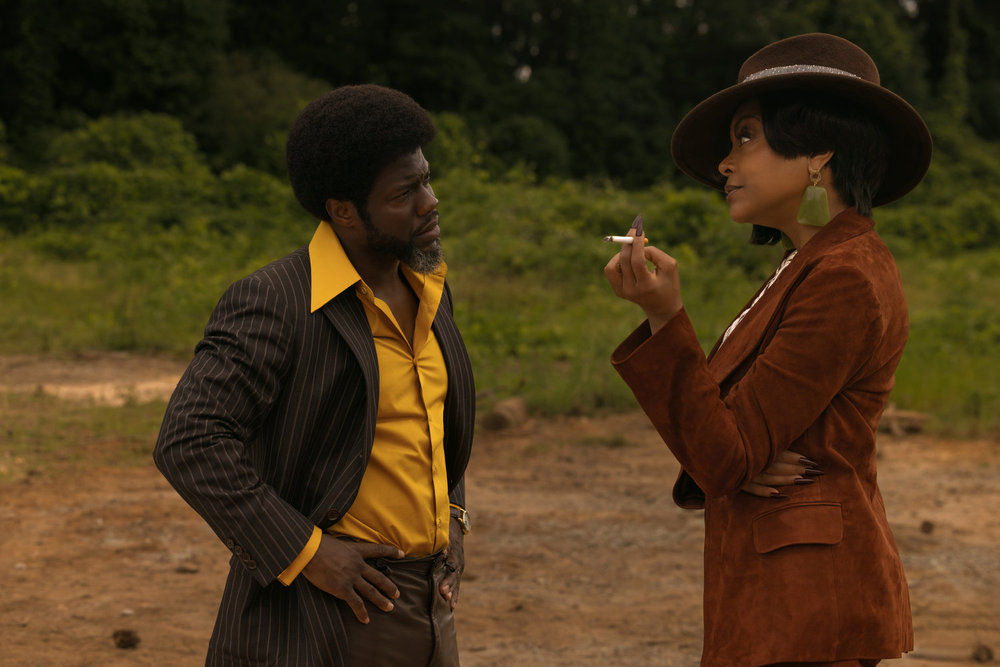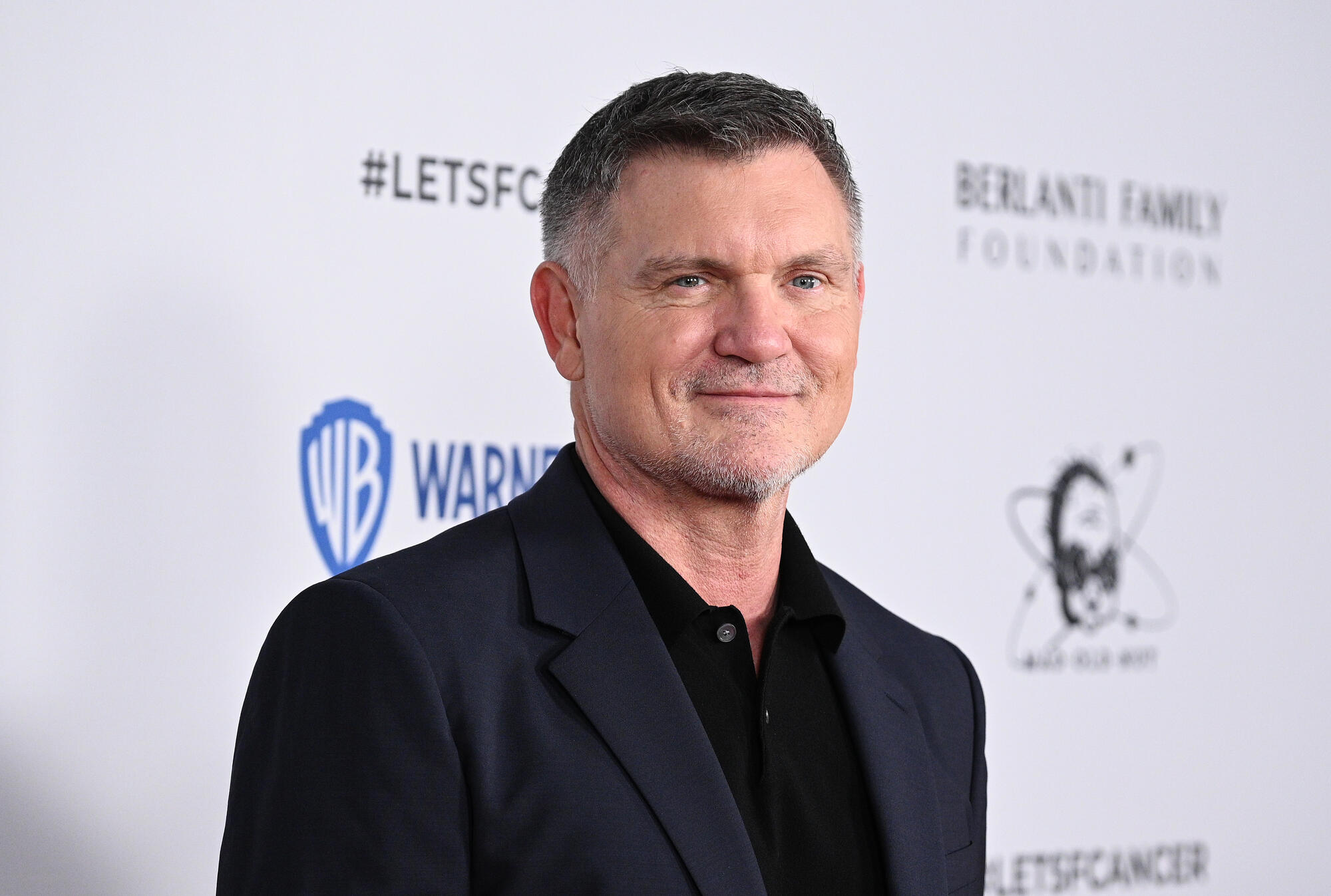
During the two weeks “Andor” writers gathered at the SoHo Grand Hotel in New York to break the second season, Beau Willimon was in the room. He even brought the whiteboards they used for brainstorming and his own assistant to take notes. But in the subsequent weeks, when the small staff dispersed to outline their individual episodes and write the initial drafts, Willimon held meetings with showrunner Tony Gilroy over Zoom.
At the same time he was writing “Andor,” he traveled overseas to work on another project: a documentary on Russia’s assault on Ukraine, which meant working in a nation under siege. “You know, I didn’t tell Tony I was over there,” Willimon said in an interview with IndieWire. “But at a certain point, he figured it out.”
War was already top of mind for the “Andor” team. Willimon said the writers talked about Ukraine “a lot” while breaking Season 2. It was February 2022, the run-up to Russia’s invasion. But being there, it goes without saying, was different.
“It really did, I think in some way, flavor at least some of the work I did on my episodes,” he said. “War and high stakes and hearing air raid sirens and being in a highly militarized environment — none of that was abstract for me. It was all very real. Rockets were exploding just a few miles from where I was staying. So how can that not, to a degree, infuse itself into a story where there’s some of those same elements? Not that there were any direct parallels, per se, but the environment certainly informed some of the work I was doing.”
As the lead-in to “Rogue One,” “Andor” Season 2 chronicles a perilous four years in the “Star Wars” timeline. The Empire’s authoritarian reach widens and tightens. To fight back, the Rebellion grows and matures. Ghorman becomes a critical battleground when the Empire occupies its a peaceful capital city and escalates a conflict for its own nefarious gains. Citizens face nightly curfews, and armed militia march on public streets. Bombs go off. Arrests are made. War breaks out.
The parallels between what’s happening in a galaxy far, far away and what’s happening right here on Earth couldn’t be more clear. Since its premiere, “Andor” has been adopted by real-world resistance groups, whether they’re fighting state-driven genocide, the rise of fascism, or an unlawful occupation. Willimon stressed that “Andor” wasn’t written with “direct parallels” in mind, but living in a country being torn apart by war “certainly informed some of the work I was doing.”
Historical precedent, so often repeated, was also a “huge part of the process” for shaping Season 2.
“We were constantly cherry-picking different moments in history that we could use as inspiration, or to put a gloss on a certain story aspect of ‘Andor,’” Willimon said. “The nature of the show, but also the franchise in general, is that it has the room, the breadth, and depth to be able to absorb a lot of different historical events. [‘Star Wars’] can transpose them in ways that provide a certain kind of dramatic distance. [It can] allow us to understand those events better because they’re put through this filter.”
Willimon said he and the Gilroy brothers are all history buffs. They recommend history podcasts to each other “all the time” and savor episodes of Dan Carlin’s “Hardcore History.”
“A lot of the themes in the show are things that humans have been dealing with for millennia, obviously,” Willimon said. “Kyle [Soller] had a great quote, which I’ll steal right now and may butcher a bit: This is the sort of show that would’ve been as relevant a hundred years ago as it is today, and the hope is that it’ll be relevant– Well, in some ways you hope it’s not relevant a hundred years from now because some of the issues it’s touching upon go to some core flaws in humanity, right? But these themes and historical paradigms and political moments are evergreen. So it was natural to draw from history.”
Reflecting recognizable moments in time not only helps add dramatic heft to “Andor’s” various space battles, it can also help inspire viewers on a visceral level — as is very much the case in a celebrated scene from the end of Episode 5, “I Have Friends Everywhere,” written by Willimon.
Set on a rainy distant planet in the middle of a risky heist, the Rebellion’s extremist leader Saw Gerrera (Forest Whitaker) delivers a rousing speech comparing the highly volatile fuel rhydonium to the resistance itself. Ostensibly, Saw’s words are meant for his newest recruit, Wilmon Paak (Muhannad Bhaier), who’s helping him pilfer the potentially lethal energy source. But as Saw continues speaking, his enthusiasm proves contagious, both for Wilmon and the audience at home.
“Have you ever seen a man die from rhydonium?,” Saw says. “Maybe you’re like me. Maybe you love … [sniffs] the smell of it. And maybe you breathe just a little too deeply. Burned from the inside. You watch your skin blister as it melts away. Or, you die loud. Cut a line? Drop a wrench? Let it spill? Don’t even need a spark, do you, boy?”
When asked to share the scene’s origins — especially given his proximity to an actual war while writing the episode — Willimon’s explanation was so thorough and generous, it’s worth sharing in full (with a few light edits for clarity):
“First and foremost, what else is happening in the episode?”
“You don’t start out saying, ‘OK, we’re going to have a big speech for Saw Gerrera, where he sort of outlines his thesis and his motivation, and that we try to do something impactful that will blow a lot of people’s minds and have a subreddit thread’ or something,” Willimon said. “You really just start from a very pedestrian place of crafting story. And there were a few things going on in that episode that contributed to that speech.”
Those other story arcs (cited by Willimon) include:
- Mon Mothma (Genevieve O’Reilly) “standing up to Emperor Palpatine” by lobbying for votes in the Senate.
- “A nascent, inexperienced, rebel underground” in Ghorman preparing to take their first major action against the Empire.
- Bix (Adria Arjona) “dealing with the PTSD” from her imprisonment, torture, and subsequent attacks, all at the hands of the Empire.
- Meanwhile, Saw Gerrera is operating on the “outer fringes, just trying to get some jet fuel to keep raising hell across the galaxy.”
“We wanted to show how the formation of the Rebellion is the amalgamation of all these extremely disparate parts; that it’s a spectrum, [stretching from] a senator on Coruscant to the insanity of Saw Gerrera and his motley crew out there in the middle of nowhere,” Willimon said. “We really wanted to show how these things coexist, [despite being] so far apart and so different. Whatever nobility and pomp and circumstance there is in the Senate, on the other end of the spectrum is the madness that is Saw Gerrera.”
“So you start asking yourself: What sort of things is Saw up to?”
From there, Willimon said shaping Saw’s story came from “thinking about juxtaposition” — furthering the contrasts between “Andor’s” rebel characters while strengthening their connection to the cause. One key juxtaposition came in how the audience understood Saw before and after this moment.
So far, Saw “has been reluctant to play with others,” as Willimon put it, but he’s still a key member of the Rebel team, so why not build that in?
“As crazy as he might seem in this arc, he’s still, to a degree, playing ball. He is working with one of Luthen’s guys,” Willimon said. “Now, we might think, ‘Maybe not. Maybe he’s going to kill this guy. Maybe he’s just using them.’ That’s certainly what we’d expect of Saw.”
“I think the big surprise at the end of [the scene] is even Saw Gerrera is welcome. You are part of our tribe and we are part of yours. It’s the least likely place you expect to hear it: that we all share this insanity of wanting to change the galaxy and fight the powers that be. It connects us, [even] a guy who most of the time is like, ‘I don’t want to have anything to do with anyone else.’”
“Wilmon Paak, which Tony slipped [in] — I didn’t name that character.”
Despite the phonetic similarities, Willimon did not come up with the name Wilmon, but the young farmhand is the next critical step toward Saw’s big scene. By Episode 5, Wilmon has been shipped off to help Saw build a machine that can safely extract rhydonium.
“We’re tracking this kid who is increasingly becoming a player [in the Rebellion]. We’re seeing his coming of age,” Willimon said. “So over the course of this episode, you’re also just trying to track what occurs for Wilmon to progress him from a guy that’s just trying to work on this piece of engineering to actually feeling the rebellion in his bones.”
“The cherry on top here is that we have Forest Whitaker [playing] Saw Gerrera, a beloved character who’s absolutely wackadoodle,” Willimon said. “So you have the opportunity to do something super weird and cool. With all of those things in mind, what do we want to do in this scene? Of course, there’s an aspect of let’s give Forest Whitaker something juicy to do.”
“But in a very real way, what is [Saw] saying to this kid?”
“Why is he even talking to him?,” Willimon said. “He’s just standing there while this kid is doing this thing? It felt like we needed to activate that scene.”
Indeed, considering he’s in the middle of a life-or-death mission, whatever tension exists in the scnee should be coming from Wilmon’s tricky procurement of the rhydonium. But as Saw keeps talking, the focus shifts. It’s not about whether Wilmon will steal the rhydo without dying from the exposure; it’s about if Wilmon will accept the danger he’s facing in this mission is the same danger he’ll always face as a rebel. How much of himself is he willing to give to the cause? His sweat? His blood? His life?
“Revolution is not for the sane,” Saw says. “Look at us. Unloved. Hunted. Cannon fodder. We’ll all be dead before the Republic is back and yet… here we are. Where are you boy? You’re here! You’re right here! And you’re ready to fight. Breathe it in! Let it run! Let it run wild!”
With that stupendous flourish (made all the more memorable by Whitaker’s triumphant oration), Wilmon inhales the very thing he was terrified to touch a few minutes prior. And, at the same time, astute fans come to discover a key piece of Saw Gerrera’s backstory: why he wears a mask in “Rogue One.”
“We weren’t sure in the first pass exactly what it was, but then the idea came to us: ‘Wait a second. The answer is Forest all along. It’s been in “Rogue One” [but in “Andor”], we haven’t seen him with the mask. Here’s an opportunity to maybe explain how you get to that in ‘Rogue One.’”
“It feels like all of this is super intentional, like we’ve reverse-engineered it back to this moment, where you get to kill several birds with one stone, which is not only do we get to have our Forest Whitaker aria, and not only do we get to advance the story and show the juxtaposition of all these prongs of the rebellion, but on top of all of that we can also say this is why he’s breathing into this mask in ‘Rogue One.’”
“Then it just took on a life of its own.”
As did “Andor” — a “Star Wars” story that’s built to last.
“Andor” is available on Disney+.



